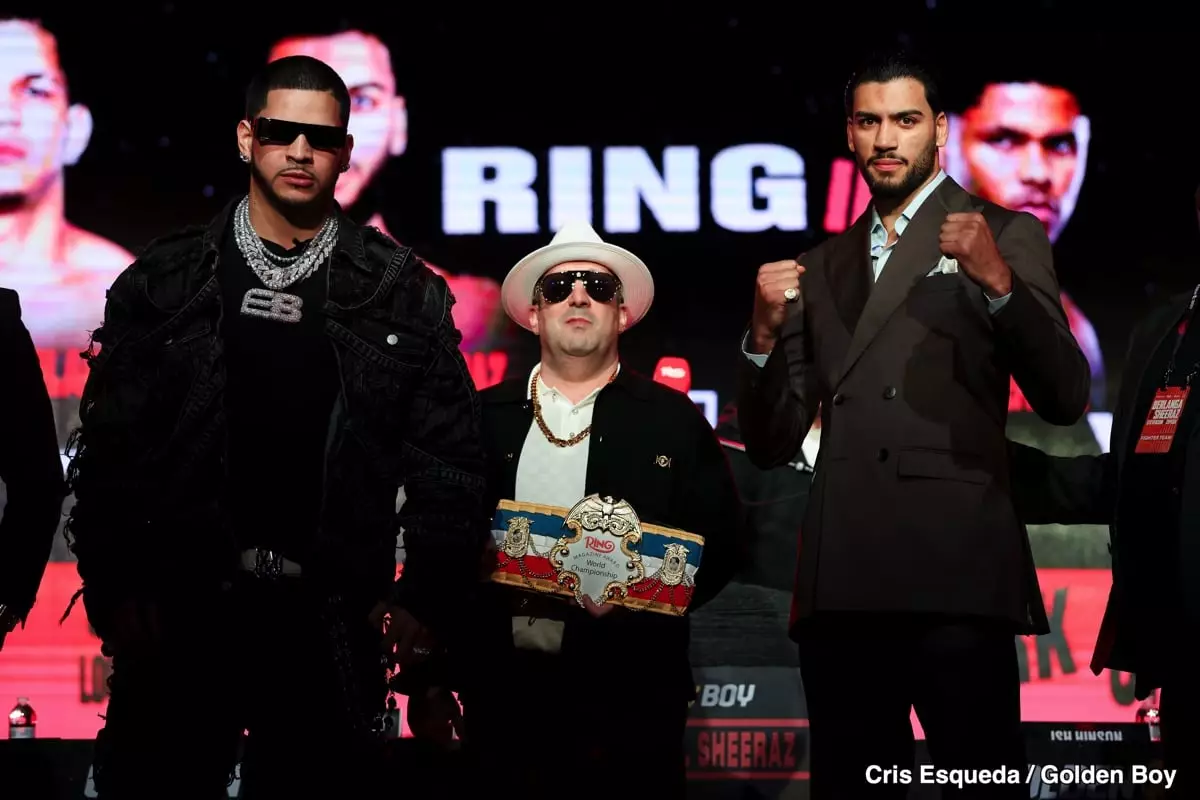In the world of boxing, every detail counts—ring size, fight pace, and mental fortitude can turn the tide of a bout. Edgar Berlanga’s confident declaration about exploiting the smaller 18-foot ring for his upcoming showdown against Hamzah Sheeraz underscores a shift in tactical thinking. Berlanga isn’t merely fighting; he’s strategizing to leverage the ring dimensions as a psychological and physical tool. By intentionally shrinking the space, Berlanga aims to suffocate Sheeraz’s rhythm, forcing him into uncomfortable exchanges where Berlanga’s power might dominate.
This approach demonstrates a fighter’s willingness to manipulate environmental factors to gain an advantage. It’s a calculated move, revealing Berlanga’s understanding that the ring size can influence fight dynamics significantly. However, such tactics are double-edged; a smaller ring can also limit Berlanga’s mobility, possibly trapping him in close quarters where counters or clumsy exchanges might expose weaknesses. The decision by promoter Turki Alalshikh to reduce the ring size from 20 to 18 feet reflects an intent to prevent chaos reminiscent of previous mismatches—essentially, an effort to create a controlled environment where Berlanga’s style can be most effective.
While Berlanga’s confidence is palpable, it’s vital to understand that ring advantage alone isn’t enough—timing, power, and mental resilience will ultimately determine the outcome.
Hamzah Sheeraz’s Resilient Spirit and Strategic Dilemma
Sheeraz enters the ring not merely as a participant but as a fighter aware of the larger implications. His statement about seeking tough challenges rather than easy wins reveals a fighter aiming to cement his legitimacy rather than accumulate hollow victories. This mindset, however, comes with its own set of risks; fighting Berlanga’s aggressive style and powerful punching can backfire if he fails to neutralize Berlanga’s timely assaults.
Training under Andy Lee, a former world champion himself, indicates Sheeraz understands the necessity of tactical discipline. Lee’s game plan likely involves exploiting Berlanga’s aggressive streak—drawing him into overextensions and countering effectively. Yet, with Berlanga’s reputation for potentially ending fights early, the pressure is immense. Sheeraz must strike a delicate balance: assert himself early to avoid Berlanga’s knockout power but also stay patient enough to capitalize on openings.
In addition, Sheeraz’s career trajectory hinges on this fight. A victory could catapult him into the global spotlight, setting him up for a title shot against Canelo Alvarez—a prize that many fighters can only dream of. Yet, the challenge is substantial; with Berlanga’s explosive power, even a well-executed game plan could be derailed in a moment of vulnerability. Sheeraz’s mindset to embrace difficulty rather than shy away from it is commendable; it’s a testament to his genuine desire to prove his worth beyond the comfort zones.
The Political Chess of the Boxing Landscape
This fight carries more than just stakes of pride and reputation. It’s embedded within a broader strategic chessboard orchestrated by promoters and stakeholders. Turki Alalshikh’s involvement signals an intent to position fighters like Sheeraz for international relevancy—perhaps even as the next potential challenger to Canelo Alvarez’s throne. The promotion’s strategic question: How to create a marketable, competitive fight that garners maximum attention without the chaos of a poorly controlled slugfest?
The fact that Sheeraz’s move is potentially influenced by promotional directives highlights how much the game is also about managing narratives and future opportunities. The promise of a lucrative payday and a possible title shot exerts enough influence to sway fighters into high-profile scenarios that could define their careers. It’s not just about fighting for glory but for leverage in an increasingly complex boxing economy where every fight is a stepping stone to potential superstardom.
In this intricate clash of ambition, power, and political maneuvering, both fighters embody different facets of modern boxing—one looking to break through with aggressive prowess, the other seeking respect through resilience and strategic mastery.
—
This bout isn’t merely about one fighter versus another; it’s a microcosm of a sport evolving under strategic, commercial, and athletic pressures. Berlanga’s boldness in claiming he will “break him up” inside the small ring speaks to a confidence rooted in power but also invites scrutiny. Can he translate his bravado into a controlled, calculated performance that yields victory? Conversely, Sheeraz’s desire to fight the best and prove his worth hints at a fighter ready to confront uncertainty to rise to greater heights. In the end, this fight exemplifies the state of boxing—a delicate dance between raw power and tactical finesse, performed under the gaze of an eager audience hungry for the next superstar moment.

